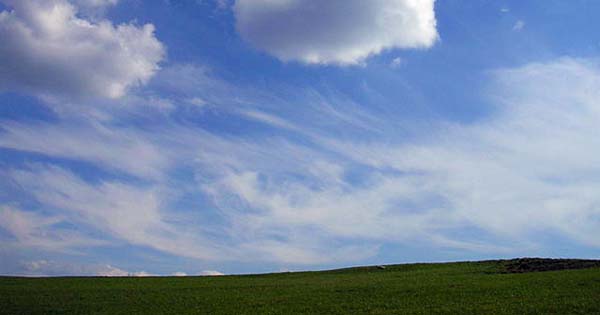
In the beginning, the earth’s atmosphere lacked oxygen. We could not have breathed this mix of nitrogen, carbon dioxide, and water vapor, but that’s okay, because we weren’t here. During the non-halcyon Era of Heavy Bombardment shortly after the earth’s formation some 4.6 billion years ago, our planet’s atmosphere was blown away (no doubt more than once) due to massive asteroid and comet collisions. But the atmosphere re-formed out of gasses spewed from volcanoes.
Pyrite (fool’s gold) is one piece of evidence that the earth’s early atmosphere lacked oxygen. Pyrite is iron disulfide, composed of iron and sulfur. It can’t form in the presence of oxygen but did form rather massively in ancient times. Oxygen is highly reactive. Had it been available back when, it would have turned the iron now found in pyrite into iron oxide. Sulfur could get it on with iron only because oxygen was not there.
Then oxygen was there. It arrived during the Great Oxidation Event, which put free oxygen into the air. This event did not occur in a day. It may have taken a million years or so. Where did this free oxygen come from?
It came from life, which came from the sea. It came from photosynthesizing cyanobacteria that used the energy of the sun to split H2O and bind the existing carbon dioxide to make sugars, fats, proteins, and nucleic acid. At one point, according to Peter D. Ward in his book Out of Thin Air, these cyanobacteria turned the ocean bright purple.
Their waste product was (and is) oxygen. For a very long time this oxygen went about combining with the rocks, as oxygen is wont to do. But eventually it became excess oxygen, oxygen beyond what the earth’s crust could tie up: free oxygen.
With the slow build-up of free oxygen there evolved oxygen-breathing fungi, bacteria, and animals to put carbon dioxide back into the air. As plants need our expelled carbon dioxide, so we need their expelled oxygen.
It was the Great Oxidation Event that led to ourselves. It was the Great Oxidation Event that led Walt Whitman to speak of “the smoke of my own breath.” It was the Great Oxidation Event that led to the breath line, that long poetic line that begins after one takes a deep breath and continues to the end of the exhale. Here is a breath line from Whitman’s poem titled “There Was a Child Went Forth.” Everything this child encounters becomes part of him including the lilacs, the grass (right here, take a deep breath), “And the March-born lambs, and the sow’s pink-faint litter, and the mare’s foal, and the cow’s calf, and the noisy brood of the barnyard or by the mire of the pond-side, and the fish suspending themselves so curiously below there, and the beautiful curious liquid, and the water-plants with their graceful flat heads, all become part of him.”
That’s a breath line. That we can read it in one long exhalation as Whitman intended is due to oxygen.

